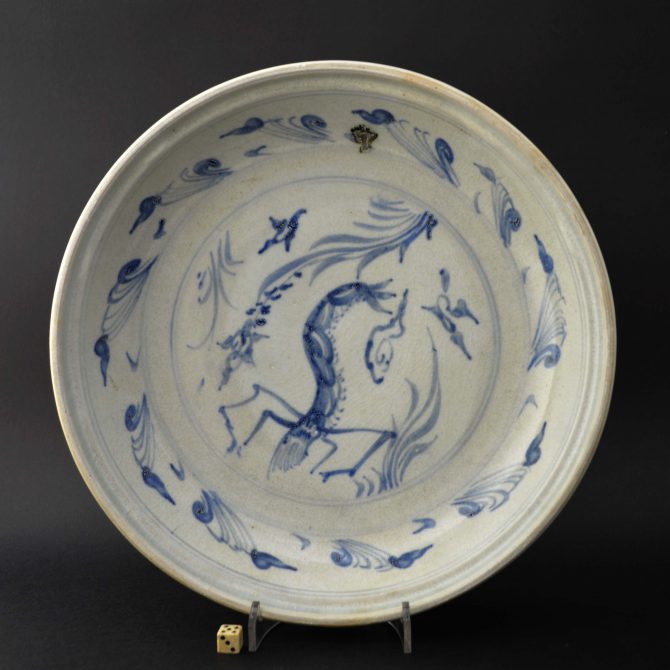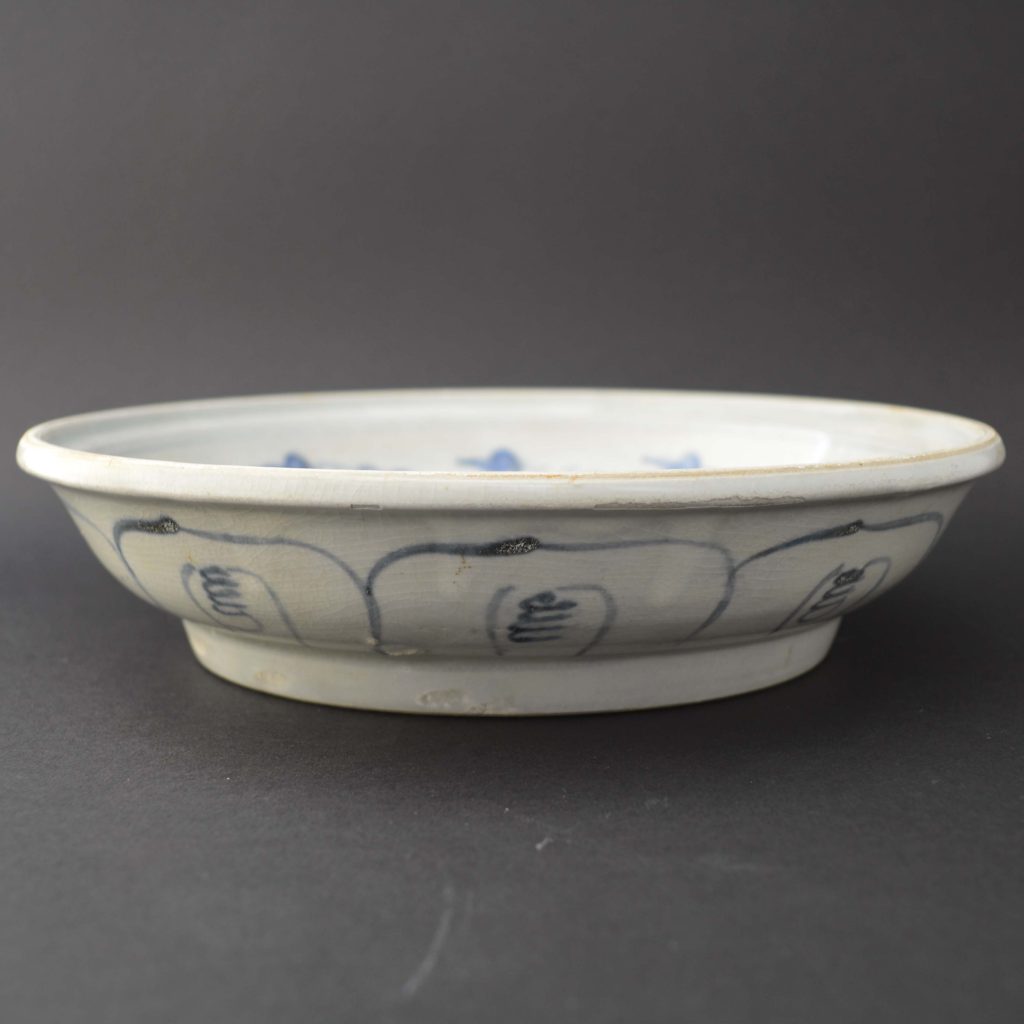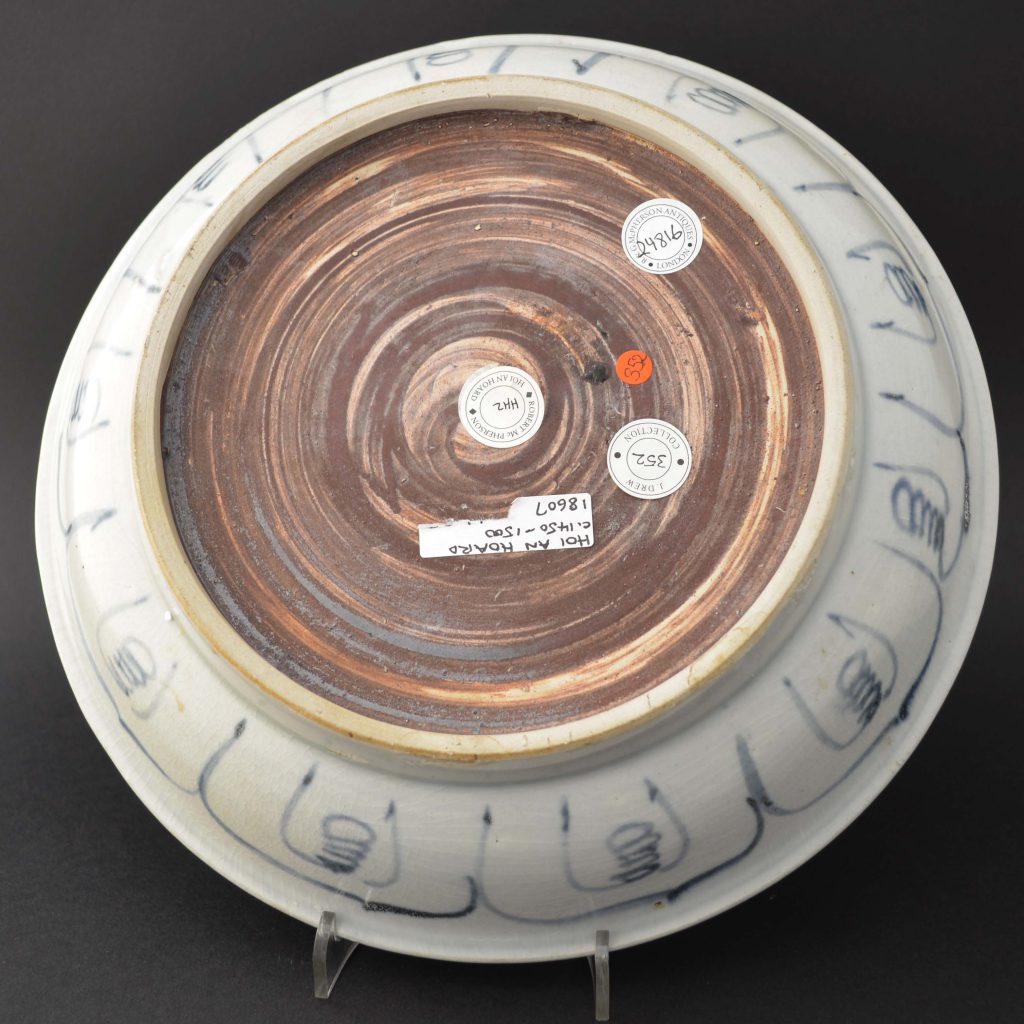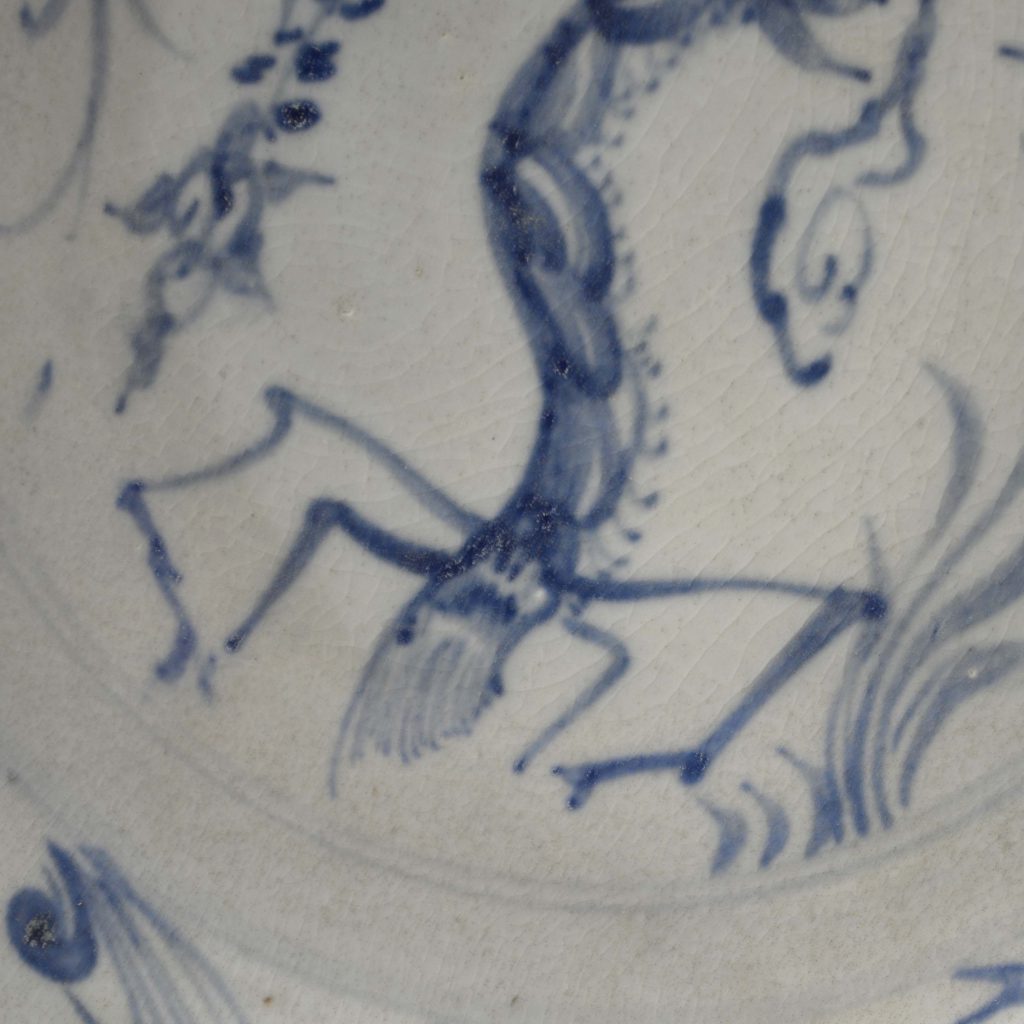
A Rare 15th Century Vietnamese Pottery Dish From the Hoi An Hoard.
A rare 15th Century Vietnamese pottery dish from the Hoi An Shipwreck. Decorated in Blue and White with a prawn among aquatic plants. There were very few dishes decorated with prawns on the Hoi An Hoard Shipwreck. The rim of the dish has the glaze wiped clean to expose the biscuit body. This was done because these moulded dishes were fired face to face, so the unglazed rims would touch one another in the Kiln, had there been Glaze on the Rims they would has become stuck together. The Unglazed Base is, as normal with Vietnamese Pottery, dressed in an iron-oxide brown.
SOLD
- Condition
- In excellent condition, the glaze is in an exceptional state of preservation for a ceramic object coming from a shipwreck.
- Size
- Diameter : 24 cm ( 9 1/4 inches)
- Provenance
- Treasures From The Hoi An Hoard, Important Vietnamese Ceramics from a Late 15th/Early 16th Century Cargo. Butterfield`s, October 11th to 13th 2000. R & G McPherson Antiques, stock number 18607. The John Drew Collection of Chinese and Japanese Ceramics. A Private European Collection of Oriental Ceramics.
- Stock number
- 24816
Information
The Hoi An Hoard :
The Hoi An Hoard, as has been the case with several other wrecks, was not found by archaeologists nor even by historians, but by fishermen, though happily not excavated by them. It became in fact the only commercial underwater site to have been excavated in a correct archaeological manner. It is one of the earliest cargoes (dated c. 1450-1500) to have come on to the market and to my mind is the most interesting and important of them all. Moreover, it is the only large Vietnamese cargo to have been discovered. A partnership was formed, to take charge of this landmark excavation, between the Vietnamese Government and M.A.R.E., the Maritime Archaeological Research Unit of the University of Oxford, under the Directorship of Mensun Bound, Triton Senior Research Fellow, Saint Peter’s College, Oxford.
Vietnamese ceramics were not treated with the importance they deserved until very recently. Several excellent new books have now been published on the subject and an exhibition of Vietnamese Blue and White has been held at the British Museum, where objects from the Hoi An Hoard featured among the exhibits. Together with the recent excavation of the kiln sites, this cargo underlines the importance and individuality of Vietnamese ceramics. I believe that the cargo in fact contains more Vietnamese ceramics of the period than exist worldwide, taking into account not only all the museums but also all the private collections. The Hoard will be a source of research for years to come.
Vietnamese Pottery From the Chu Dou Kilns :
Chu Dou Kilns, six kilometres from Hai Dong was the largest centre of ceramic production in medieval Vietnam. The quality of the ceramics ranged from crude everyday vessels to exquisite pieces decorated with great skill. Large quantities were produced, moulds were employed to form dishes and bowls, the rims were then wiped clean of glaze so they could be fired rim to rim without sticking in the kiln. The style of the decoration was very free and appears often to have been painted at speed using a very wet brush. Individual lines of the decoration have a visible starting and finishing point. The exact spot where the artist first touched the surface of the ceramic object with his brush can be identified and then where he removed it. I say “he” but a most important jar in the Topkapi Saray Museum in Istanbul is signed and dated by a female artist. Men, women and many children were all employed in ceramic production in Vietnam.
The John Drew Collection of Chinese and Japanese Ceramics :
John Drew was born in 1933 in Tideswell, Derbyshire, where his father was curate. The family moved to Norfolk whilst he was still a baby and his father became the rector of the parish of Intwood and Keswick. He was educated at Sedbergh School and after National Service in the R.A.F. being taught Russian, he went to Queens College, Oxford to read Greats (Classics). He spent nearly all his working life in various African countries as an archivist, moving to a post at Cape Town University in 1978. He remained in Cape Town after his retirement until his death in 2006. He had a great love of the English countryside (but not the climate) and this is shown in many of the pieces he collected. His taste was varied and ranged from Neolithic right through to the 18th Century. When we sent photograph to his home in Cape Town of pieces we thought he might be interested in, he would write long funny well observed letters back, wanting to add many of the items to his growing collection. Over the years we got to know him better and better, and during the last few years it was very rare for him to not want all the pieces we offered him. We knew his taste, even though his taste was so varied. This was in no small part because he had a very good eye and it was a pleasure finding things that interested him, because they were also very interesting to us. He never got to put his collection on display, something he hoped to do while on retirement in England, so it is with a mixture of pleasure and sadness that we offer these pieces from his collection. Each piece has a John Drew collection label, so when the collection is split up there will be some lasting record of the love and hard work he put into his two decades of collecting.



